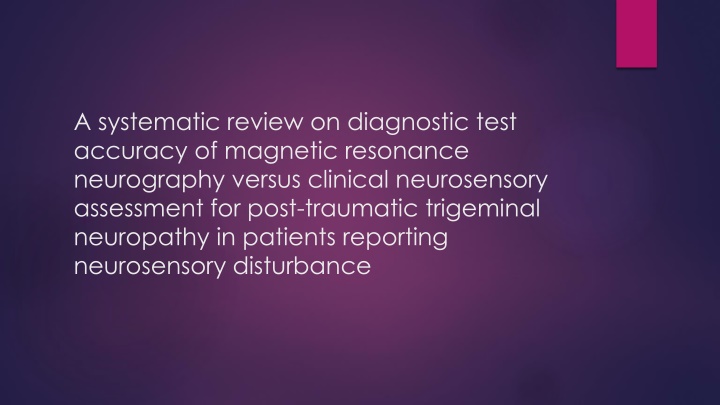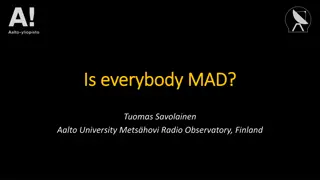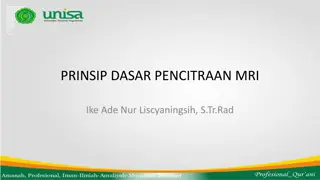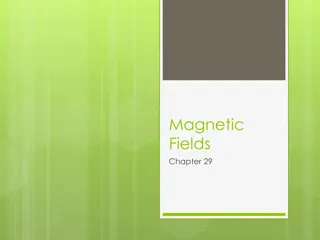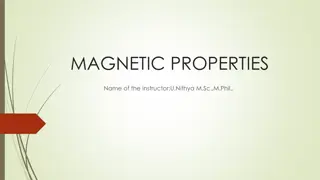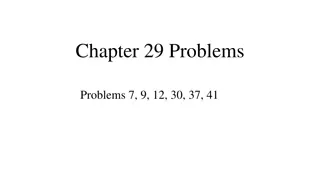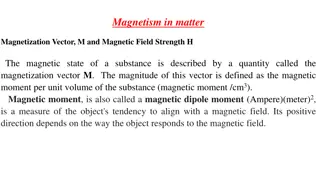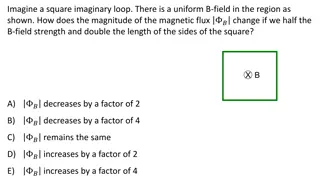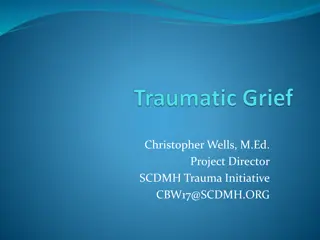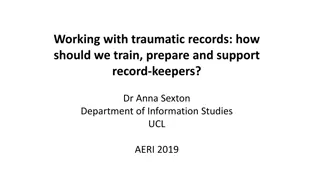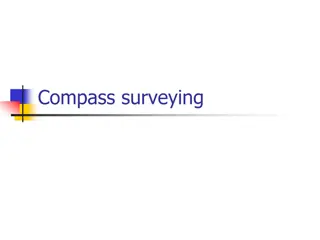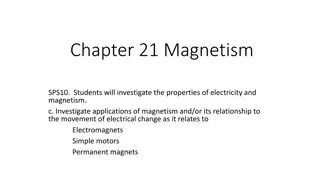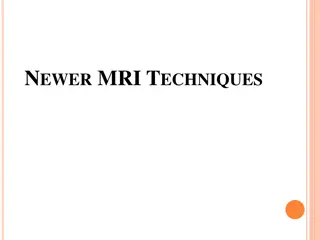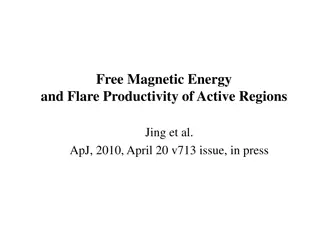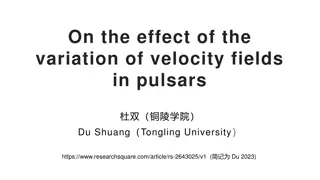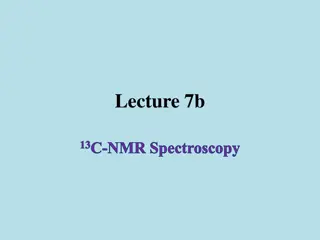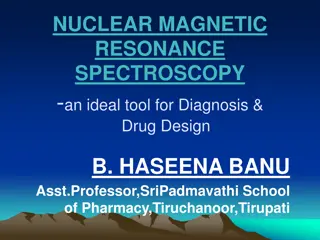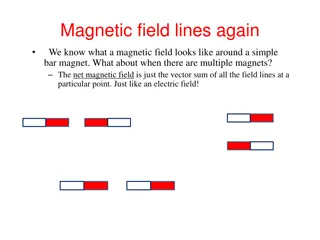Diagnostic Test Accuracy of Magnetic Resonance Neurography in Post-Traumatic Trigeminal Neuropathy
This systematic review compares the accuracy of magnetic resonance neurography with clinical neurosensory assessment in patients with post-traumatic trigeminal neuropathy. It discusses diagnostic tools, risk factors, facial nerve electrodiagnostics, and quantitative sensory testing. The aim is to evaluate the effectiveness of MRN in diagnosing nerve damage severity and its impact on clinical decision-making.
Download Presentation

Please find below an Image/Link to download the presentation.
The content on the website is provided AS IS for your information and personal use only. It may not be sold, licensed, or shared on other websites without obtaining consent from the author.If you encounter any issues during the download, it is possible that the publisher has removed the file from their server.
You are allowed to download the files provided on this website for personal or commercial use, subject to the condition that they are used lawfully. All files are the property of their respective owners.
The content on the website is provided AS IS for your information and personal use only. It may not be sold, licensed, or shared on other websites without obtaining consent from the author.
E N D
Presentation Transcript
A systematic review on diagnostic test accuracy of magnetic resonance neurography versus clinical neurosensory assessment for post-traumatic trigeminal neuropathy in patients reporting neurosensory disturbance
Procedure with risk of damage of peripheral trigeminal nerves: wisdom tooth extraction endodontic treatments placement of implants administration of local anesthesia neuropathic pain and phenomena such as allodynia and Hyperalgesia
Currently diagnostic tools for PTTN: patient-reported neurosensory disturbances (NSD) qualitative or quantitative psychophysical neurosensory tests (NST) Electrophysiological tests difficult to apply in the trigeminal distribution cannot precisely depict the localization and extent of trauma Distinction of damage severity: medicolegal point of view a faster intervention, better neurosensory recovery
quantitative sensory testing (QST) A neurosensory deficit is present or not unclear how these tests evolve in the transition from the acute to the chronic phases of trigeminal nerve damage unclear if they can predict prognosis and treatment outcomes in PTTN
Magnetic resonance neurography (MRN) to enhance the visualization of the peripheral nervous system & its pathology potential to visualize and quantify: nerve injuries severity of damage
Aim of study (main) to conduct a systematic review of diagnostic test accuracy (DTA) of MRN vs clinical neurosensory testing or patient-reported NSD in patients with PTTN. (Secondary) to identify currently used MRN sequences, their parameters and performance as well as how they correlate with nerve injury severity. (Finally) adding MRN to the diagnostic work-up has any impact on clinical decision-making?
PICO (P) patients suffering from PTTN resulting in NSD within the trigeminal distribution (I) underwent MRI (C) comparison with clinical (neurological) examination or patient- reported NSD (O) to assess techniques reported, its diagnostic accuracy, performance and correlation with nerve injury severity
PROSPERO An experienced librarian co-create the search method Database: PubMed, Embase, Web of Science, and Cochrane Library
Selection criteria original research articles without restrictions on language or publication date Type of study: cohort studies, Observational case control, cross-sectional, randomized controlled trials (RCTs) and case series Patients: diagnosed with PTTN on the basis of sensory tests/ patient-reported NSD (MRN: index test)
Exclusion criteria Reviews Animal trials Case reports Meta-analyses Systematic reviews
literature search & deduplication: one person titles and abstracts screening: two individuals independently
Study characteristics most studies: high risk of bias but with low applicability concerns DTA-analysis nor a meta-analysis cannot be performed: low methodological quality widely varying methods a broad overview of the study and MRN characteristics
Table 3. Characteristics of included studies Table 3. Characteristics of included studies Investigated nerve (number of nerves investigated) Reported guideline Number of Patients (M/F) Timing of MRI acquisition Study Nature Design Inclusion criteria Review question Reference test Can MRN differentiate normal from abnormal/non- injured nerves Correlation of MRN with clinical NST and surgical findings Suspected peripheral trigeminal neuropathy Clinical NST (60/60) Intraoperative findings (26/60) Zuniga et al. (2018)31 LN (20) IAN (40) Retrospective Case series NS 60 Patients NS MRN can differentiate between normal and injured nerves Nerve injury classification correlates with MRN, NST and surgical classification Neurosensory disturbances of IAN or LN IAN (NS) LN (NS) (122 in total) Clinical NST (24) Intraoperative findings (24) Dessouky et al. (2018)33 24 Patients (10/14) 18 Controls (3/15) Retrospective Case-control NS NS Anatomic evaluation IAN or LN using 3DAC- PROPELLOR sequence Correlation of NSD severity with MRI morphology Persistent neurosensory disturbances of IAN or LN Ranging from 1 month to 108 months after start of symptoms Patient reported symptoms Contralateral side Terumitsu et al. (2017)29 IAN (12) LN (7) Retrospective Case series NS 19 (4/15)
Cox et al. (2016)32Retrospective Case series NS 17 Patients (7/10) Suspected peripheral trigeminal neuropathy Assess correlation of MRN with surgical findings Assess impact of MRN on clinical management Course of inferior alveolar neurovascular bundle and SI after third molar surgery Ranging from 2 weeks to 17 years after start of symptoms LN (4) IAN (13) Contralateral side? Intraoperative findings Cassetta et al. (2014)35 Prospective Cohort NS 196 Patients (112/84) Indication for mandibular third molar extraction AND on panoramic radiograph: root apexes reach upper border mandibular canal OR Superimposition of roots over mandibular canal Persistent neurosensory disturbances of IAN 3 days IAN (343) Clinical postoperative evaluation +QST (before and after operation) Terumitsu et al. (2011)28 Retrospective Case series NS 16 Patients (3/13) Evaluating IAN using high- resolution 3D volume rendering Response of neurovascular bundle to trauma associated with third molar surgery Ranging from 1 month to 8 years after start of symptoms 3 36 h postoperative IAN (16) Clinical evaluation Contralateral side Kress et al. (2004)30 Retrospective Case-control NS 30 Healthy subjects 41 Patients (39/2) MRI following removal of third molar because of swelling, abscess or postoperative bleeding All patients were free of neurological symptoms Fracture of the mandible IAN (73) Contralateral side? Healthy mandibles Kress et al. (2003)34 Retrospective Case series NS 23 Patients (19/4) Visualize the neurovascular mandibular bundle after mandibular fracture Assess its continuity After fracture but before operative reduction and fixation of the fracture IAN (21) Intraoperative evaluation of neurovascular bundle Healthy mandibles
Table 4. MRI parameters for each study TR Slice thickness (mm) 3.5 3.5 0.8 4 1.5 (iso) 0.9 (iso) Fat Sequence protocol T2 SPAIR T1W CISS 3D DTI 3D STIR SPACE 3D DW PSIF Generic MRI Technique Spectral attenuated inversion recovery Convention al Balanced dual excitation Diffusion tensor imaging Short tau IR Reverse- echo gradient- echo Acquisition orientation Axial Axial Axial Axial Coronal Coronal TE (echo time) (ms) 69 8.7 2.66 83 78 3.25 (repetition time) (ms) 5320 710 5.32 7100 3000 12 Matrix (pixels) 320 342 320 342 256 256 74 74 320 259 256 208 Number of excitations Flip angle ( ) Other parameters suppression techniques Adiabatic inversion pulse Post Study MRI device 1.5T Siemens Avanto 3.0T Philips Ingenia 3.0T Philips Achieva MRI coil Multichann el headcoil FOV (cm) Corpus callosum to chin Corpus callosum to chin Suprasellar area to C2 Skull base to chin Corpus callosum to chin Corpus callosum to chin processing MPR coronal and oblique following nerve trajectory Contrast No Zuniga et al. (2018)31 Dessouky et al. (2018)33 1.5T Multichann el headcoil 3D DW PSIF Reverse- echo gradient- echo Coronal 3.25 12 0.9 (iso) 256 208 Corpus callosum to chin Adiabatic inversion pulse MPR coronal and oblique following nerve trajectory No Siemens Avanto 3.0T Philips Ingenia 3.0T Philips Achieva Terumitsu et al. (2017)29 3.0T GE SIGNA 8CH PROPELLOR Diffusion- weighted imaging Coronal/axi al 78.7 4000 5 128 128 18 18 (neurovasc ular coil) 11 11 (surface coil) 3 3DAC No neurovascul ar Custom 3- inch surface coil
TR Slice thickness (mm) 3.5 3.5 0.8 4 1.5 (iso) 0.9 (iso) Fat Sequence protocol T2 SPAIR T1W CISS 3D DTI 3D STIR SPACE 3D DW PSIF Generic MRI Technique Spectral attenuated inversion recovery Convention al Balanced dual excitation Diffusion tensor imaging Short tau IR Reverse- echo gradient- echo Balanced gradient- echo Fast gradient- echo Incoherent gradient- echo Acquisition orientation Axial Axial Axial Axial Coronal Coronal TE (echo time) (ms) 69 8.7 2.66 83 78 3.25 (repetition time) (ms) 5320 710 5.32 7100 3000 12 Matrix (pixels) 320 342 320 342 256 256 74 74 320 259 256 208 Flip angle ( ) Other parameters Tau = 160 ms B values: 0, 800, 1000/Directi ons: 12 suppression techniques Adiabatic inversion pulse Post Number of excitations Study Cox et al. (2016)32 MRI device 1.5T Siemens Avanto MRI coil Multichann el headcoil FOV (cm) Corpus callosum to chin Corpus callosum to chin Suprasellar area to C2 Skull base to chin Corpus callosum to chin Corpus callosum to chin processing MPR coronal and oblique following nerve trajectory Contrast 2/17 Patients Cassetta et al. (2014)35 3.0T GE Discovery MR750 8CH 3D FIESTA (T2) 3D SPGR (T1) Axial Axial 2.2 3 4.6 8 0.6 0.6 512 512 512 512 20 20 15 21 1 2 Standard + MPR following nerve trajectory No neurovascul ar Terumitsu et al. (2011)28 3.0T GE 8CH 3D SPGR (T1) Not 4.06 15.576 1.0 320 256 18 18 2 20 Bandwith 31.2 kHz / Voxel size = 0.35 x 0.35 x 0.5 mm Chemical shift- selective pulse (CHESS) Standard + MPR following nerve trajectory Ray-casting process MPR parasagittal following nerve trajectory No neurovascul ar mentioned Kress et al. (2004)30 Philips (no further specifics) Temporoma ndibular joint coil T2 TSE T1 FFE Turbo spin- echo Incoherent gradient- echo Axial Sagittal 100 6.1 4523 15 3 512 326 512 326 23 x ? 27 x ? Principle Of Selective Excitation Technique (Proset) Yes 1.5 Kress et al. (2003)34 1.5T (no further specifics) Not T1-weighted Proton density Convention al Convention al Not 6.1 6.1 15 15 1.5 1.5 512 326 512 326 27 x ? 27 x ? 30 15 Fat MPR Yes mentioned mentioned saturated parasagittal following nerve trajectory
Discussion MRN correlates with: Clinical and surgical findings Neurosensory testing a guideline or framework reproducibility Most research groups 3 T scanners with T2 weighted gradient echo imaging Coil type differed Uniform fat suppression evaluation of the peripheral nervous system Post-processing (Multiplanar reformatting) along the course of the nerve
An isotropic voxel size further assess 3D improving resolution possibly reducing artifacts a thin slice thickness (nerve branches often less than 2 mm in diameter) Standardization of SI calculations & determining cutoff value
etiology of the PTTN (patient inclusion criteria) region of interest where RSI values are measured further complicating future comparison of studies mapping of the whole nerve trajectory
impact on clinical decision-making Cox et al (2016): substantial impact (one-third of patients) change in treatment a cost benefit analysis adding MRN to the diagnostic work-up?
Limitations The small number of articles Low quality of articles Different methodologies and results No randomized controlled trials DTA could not be determined
Limitations insufficient scientific base to support or refute the use of MRN in the diagnosis and grading of PTTN MRN seems promising in improving PTTN diagnostics treatment decision prediction of neurosensory recovery
Suggestion prospective blinded DTA studies a rigorous and reproducible study design
